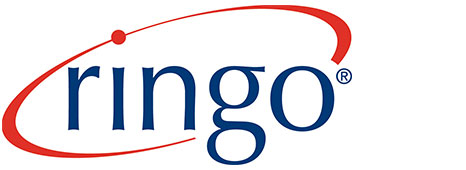Answers to VMS Questions You’ve Been Hesitant to Ask Out Loud

What is a VMS?
VMS stands for Vendor Management System. It is a web-enabled platform that allows organizations to manage and procure staffing services (for both temporary help and direct hire candidates), as well as any contract or contingent labor. Many vendor management systems are neutral which lets them function independently of a parent staffing firm. Typical features of a VMS include job order requisition, distribution, automated timesheet submission and review, consolidated billing and diverse reporting capabilities according to the user’s needs.
Do we really need one?
Although there is no set rule for usage, it’s strategic to consider using a VMS if your staffing needs are complex OR if your average annual spend on contingent talent is $500,000+. Interestingly, many companies think their spend is nowhere near that amount when it really is that number or higher; but they have no real universal monitoring tool. Contingent talent is one of those hidden costs that can significantly impact the bottom line.
What are the benefits of implementing a VMS?
A VMS will streamline the procurement process by automating the hiring of temporary associates and placing everything on one easy-to-use online platform. This is especially important if you currently use three or more staffing vendors to staff your workforce. A VMS offers a variety of reports to help track spend, review timesheets and overall vendor usage and satisfaction. This can help lead to a savings up to 21% over previous spend. Why? Because a consistent, universal process adheres to rate guidelines and set usage criteria – no maverick ordering or rates gone rogue. Additionally, the automation of order and timesheet approvals reduces paper usage by 100% (go green) and decreases time wasted tracking down paper timesheets to have them signed and invoiced.
What kind of budget will we need?
Zero dollars! A VMS costs the organization nothing to use. It is 100% vendor funded which means your staffing suppliers assign and invoice their temporary workers to your organization through the platform and they pay a nominal administrative charge to the VMS based on the amount of billing running on the platform.
How many people do I need to hire or allocate to handling VMS tasks?
No additional staff members! The VMS would be used by all of your organization’s current staff (those who requisition talent) and the temporary workers assigned to your sites. There will be free training provided by the VMS company to ensure a smooth transition.
Some of my team have favorite staffing suppliers. If we use a VMS do we have to use only certain staffing firms?
No, the vendor neutral nature of a VMS allows you to use any staffing vendor of your choice. There is no restriction to the number of staffing firms you can place on the platform. VMS stands for Vendor Management System. It is a web-enabled platform that allows organizations to manage and procure staffing services (for both temporary help and direct hire candidates), as well as any contract or contingent labor. Many vendor management systems are neutral which lets them function independently of a parent staffing firm. Typical features of a VMS include job order requisition, distribution, automated timesheet submission and review, consolidated billing and diverse reporting capabilities according to the user’s needs.
What if my staffing vendors do not want to come on board?
That’s unlikely. VMS usage in the staffing industry has become a common practice and most staffing providers are already familiar with how a VMS works and will comply. They understand it is a huge benefit to organizations using a large volume of contingent talent and generally agree as part of their client service best practices. In order for your organization to benefit from a VMS, all staffing vendors would need to utilize the system so that you can track spend and time-to-fill properly. It takes the disparity out of service function, price and performance so that you can measure your staffing firm network effectively and by universal criteria.
Is this time intensive? How long will training take?
At Ringo, we only train your staff on what they need to know, so that training can be performed quickly. Webcasts are provided during implementation which usually take 15 minutes.
Will my relationships with my existing staffing vendors be disrupted?
No, we encourage our clients and vendors to retain their close relationships. They can still reach out to you directly with any concerns. Think of the VMS as a staffing dashboard or control center where you funnel in and out the information to your vendors.
Our IT staff is already overburdened – is this going to require special IT support or budget?
Not at all, all support is provided by the VMS. No additional hardware or software is required. The VMS works from any web-enabled computer. As the client, the VMS is provided to you FREE of cost.
How soon might we see a savings on our staffing investment? When you implement a VMS are you able to see your spend in real time?
You will gain a baseline on your average spend and be able to see usage and spend by cost center, user, location or whatever parameters are important to you. Those reports are all customizable to your need and accessible to you directly. The VMS makes your users accountable for their contingent labor usage and will adhere to any financial constraints or limits you set.
Can I see a demo and how long will it take to implement if we move forward?
A demo can be scheduled immediately. If you choose to move forward, we will create an implementation plan based on your current staffing usage. Most organizations are up and running in approximately two to three weeks.



